
 |
Eager Space | Videos by Alpha | Videos by Date | All Video Text | Support | Community | About |
|---|

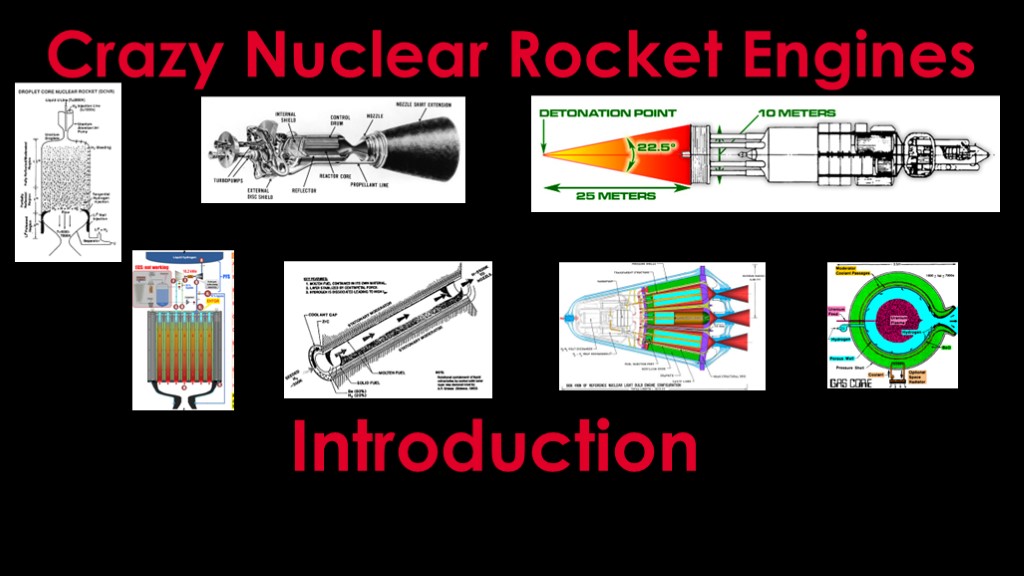
Welcome to the Crazy Nuclear Rocket Engines series.
We will be talking about a number of different engine designs of varying degrees of craziness, but there is some important background information to cover before looking at specific designs. That is the purpose of this video.
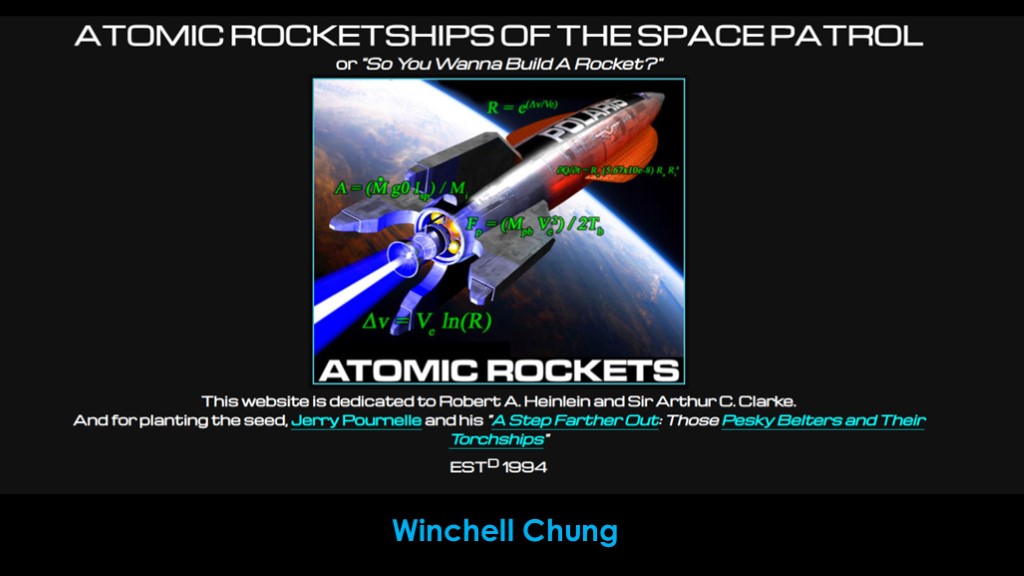
I am hugely indebted to the "Atomic Rocketships of the Space Patrol" website by Winchell Chung.
It contains a huge amount of information about all the engines I'll be covering, including links to the source material. It's just a fabulous reference for what is science fact, what is science fiction, and how the two intersect.
There's a link in the video description.
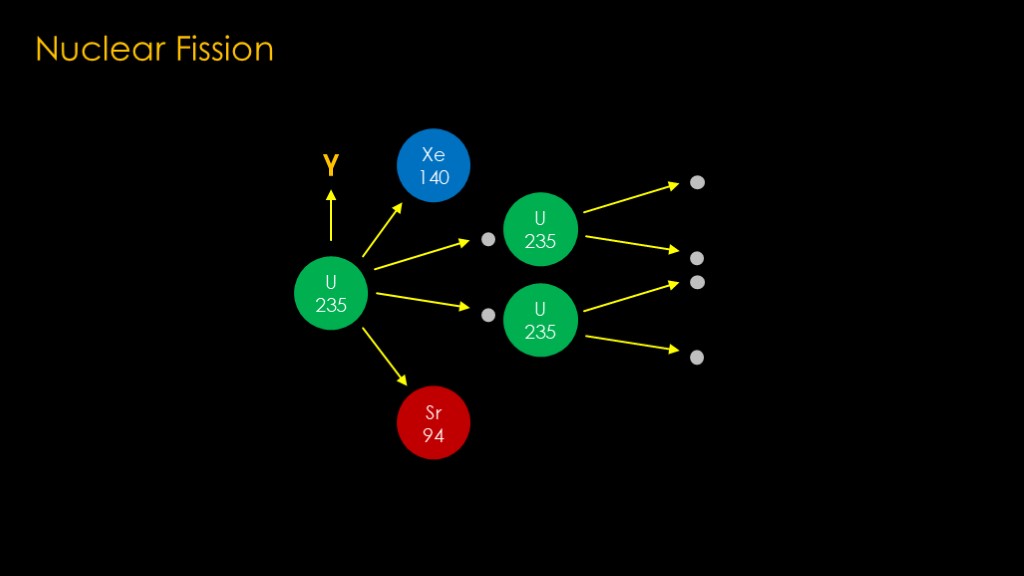
To talk about nuclear rockets we need to understand nuclear fission. There are a few different elements that might be used as nuclear fuel, but uranium is the most common, specifically uranium 235.
The 235 is important as this specific kind - or isotope - of uranium is much less stable than the more common uranium 238.
A Uranium 235 atom has a chance of spontaneously breaking apart. When that happens, we get:
Two new atoms made up from the protons and neutrons that were in the original atom. Here it's xenon 140 and strontium 94, but the elements created vary.
There is also a gamma ray created, a photon of very high-energy radiation.
And there are also a few neutrons created. If these neutrons hit other atoms of uranium 235, they will cause those atoms to break apart, or fission, releasing more neutrons
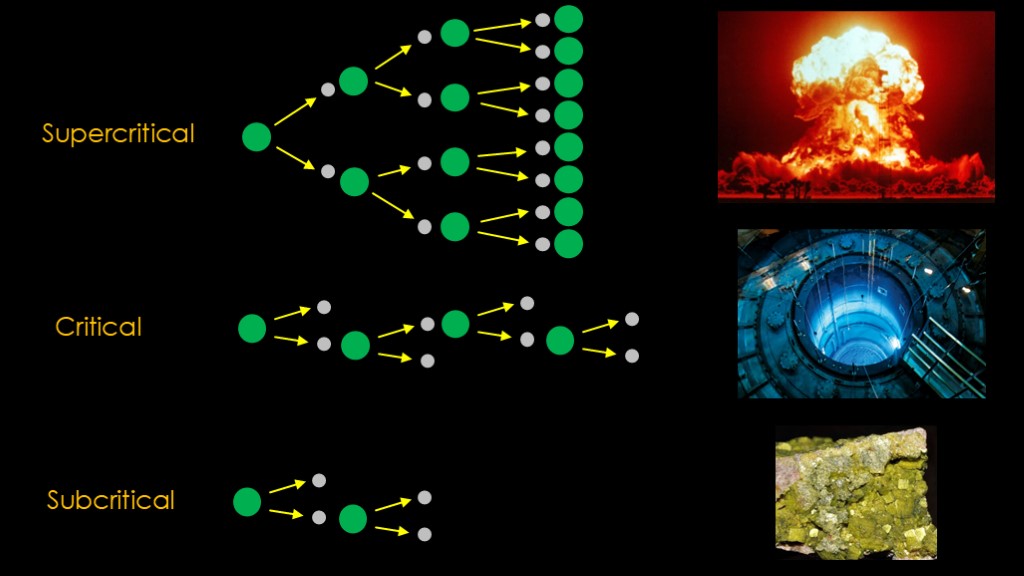
There are three things that can happen after that initial fission:
In the first case, the first fission produces two neutrons and one of those finds another uranium 235 atom to fission, but after that there is no more fission. The reaction just dies. This is known as "subcritical"; the uranium is mostly just sitting there, as it is in uranium ore.
In the second case, one of the neutrons from each fission causes another atom to fission, so there is a steady level of fission activity. This is known as Critical, and this is where nuclear reactors are operating when they are in a steady state. There might be a little or a lot of fission happening, but the rate is steady.
In the final case, more than one neutron from each fission causes another atom to fission, so the amount of fission going on is increasing. This is known as "supercritical". If this increase is fast enough, we end up with a nuclear explosion.
It is therefore important to control the reaction so it continues at the desired rate.
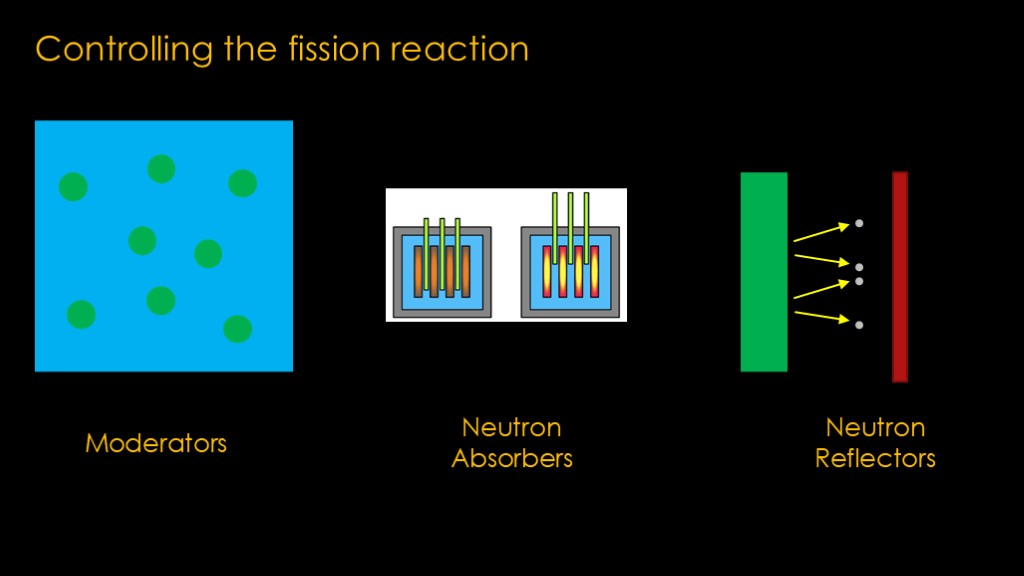
There are various ways to control the speed of the reaction.
If we have a collection of uranium atoms that are subcritical, we can surround them with water. The neutrons will collide with the hydrogen atoms in the water and slow down, and that increases the chance of each neutron causing another fission. Graphite can also be used for this purpose. These are confusingly called "moderators" because they slow down (moderate) the speed of the neutrons, but they *increase* the rate of reaction.
There are other chemical elements - such as boron or cadmium - that absorb neutrons. They are used in control rods in nuclear reactors; drop them down into the core and they will absorb neutrons and reduce the rate of the reaction.
There are other elements that can reflect or scatter neutrons. If we have a nuclear reactor, the neutrons that come out the side of the reactor core are lost. If we put a neutron reflector like Beryllium next to the core, some of the neutrons will be scattered back to the core and be able to cause further reactions.
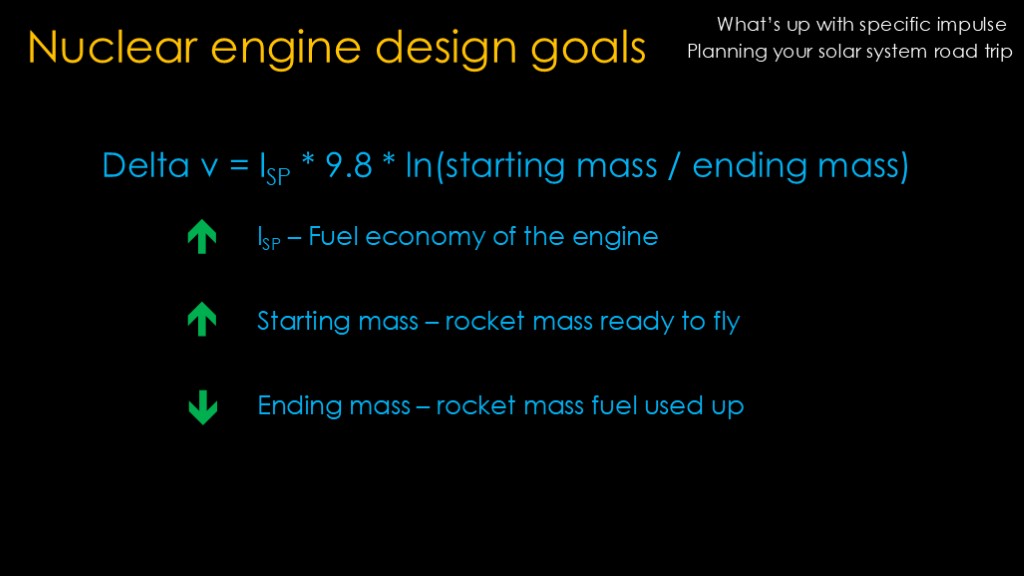
To understand what these engine designers are trying to do, we need to understand what make a rocket engine good.
I'll link two videos for background.
What's up with specific impulse talks in depth about what specific impulse is and what affects it.
Planning your solar system road trip explains why you should care about delta v.
Delta v is a measurement of the useful work that we can get out of a rocket. It is defined as the specific impulse times 9.8 times the natural logarithm of the starting mass over the ending mass.
The specific impulse - generally written as Isp - is a measure of the fuel economy of the engine - how much useful work is available for a given amount of propellant.
Starting mass is the mass of the rocket or stage all fueled up and ready to fly.
And ending mass is that same rocket or stage when it has burned up all of it's fuel.
Starting mass divided by ending mass is sometimes known as the mass ratio.
We want more delta v. There are three main ways that we can do it.
We can use an engine that produces a higher specific impulse
We can create a rocket that has a higher starting mass by packing more propellant into it.
Or we can create a rocket that is lighter with a lighter airframe or lighter engine.
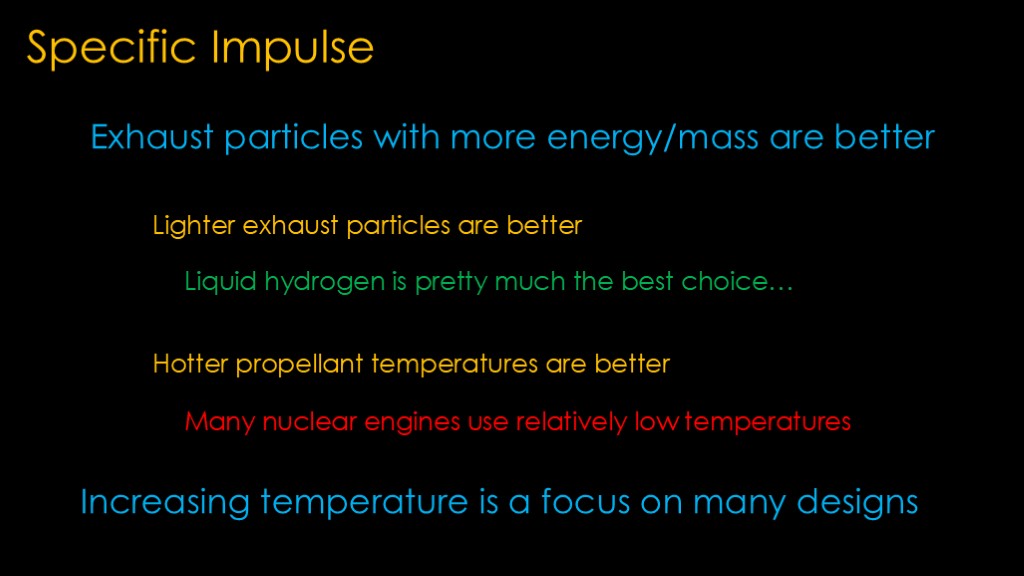
Looking at specific impulse in more depth.
Exhaust particles with more energy per unit of mass lead to a better specific impulse.
There are two main rules:
The first is that lighter exhaust particles are better, so using propellants with light atoms is better than heavy atoms.
Nuclear thermal rockets might use different propellants, but they generally use liquid hydrogen, as it gives the lightest exhaust particles. This gives them a big advantage over chemical rockets.
The second rule is that hotter propellant temperatures are better as it means more energy per exhaust particle.
Unfortunately - for reasons we'll explore in later videos - many nuclear engines use relatively low temperatures, which reduces the specific impulse they produce. Since they already use the best propellant choice, the focus of designers is on creating hotter propellant temperatures.
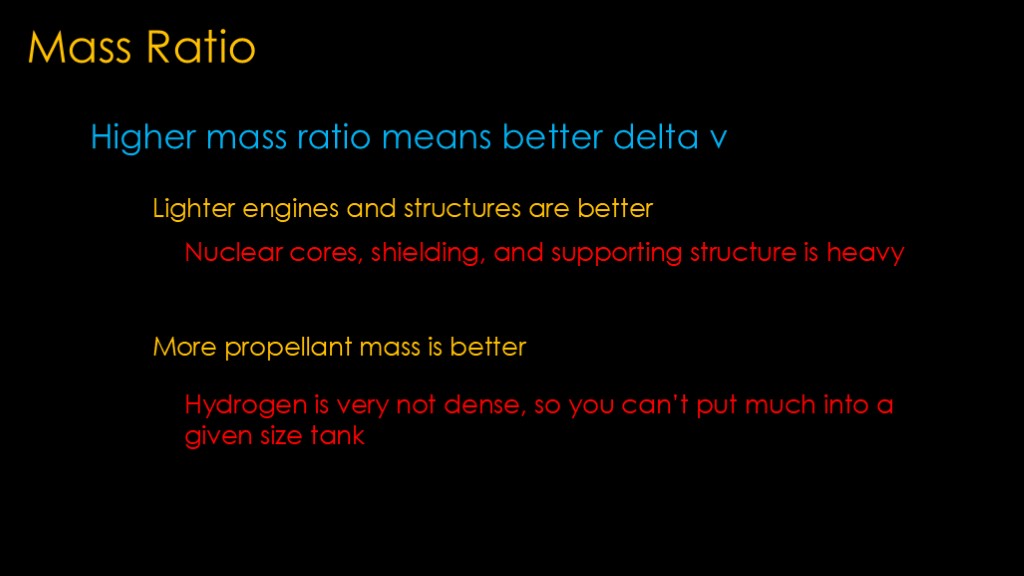
Now looking at mass ratio
Higher mass ratio yields better delta v
The first rule is that lighter engines and structures are better.
Unfortunately, everything in the nuclear rocket is heavy. The nuclear core is heavy, all of the shielding is heavy, and the supporting structure is heavy. All that mass means the ending mass of the rocket is greater.
The second rule is that more propellant mass is better. Unfortunately, hydrogen propellant is not dense, so you can't put much into a given size tank.
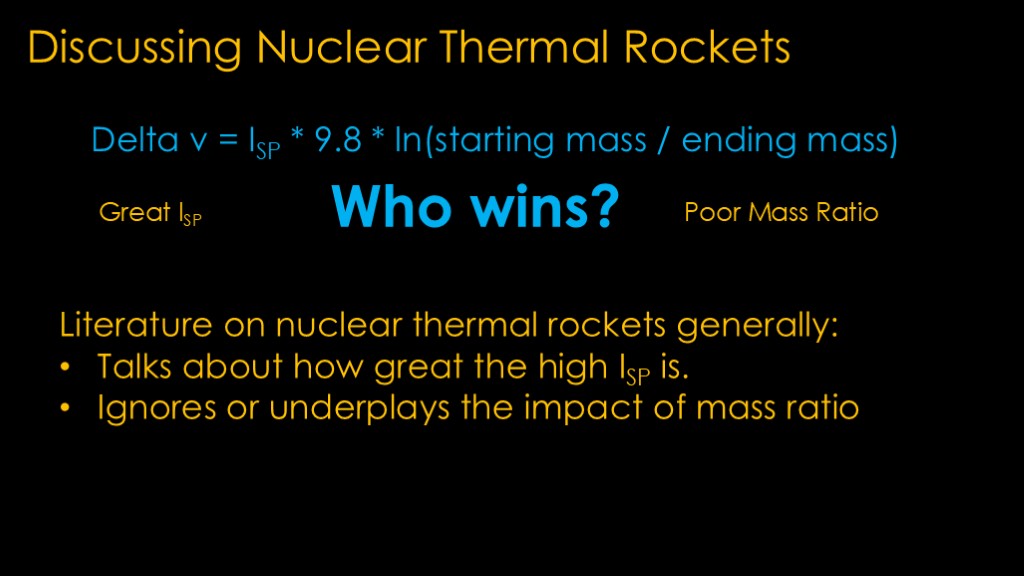
What we end up with is an engine with great specific impulse and poor mass ratio. Who wins? Well, it depends on the details - exactly what specific impulse you get and how heavy your engines and tanks are.
This isn't clear without looking at the numbers for a specific scenario.
To overgeneralize, nuclear thermal literature:
Talks about how great the higher specific impulse is.
Ignores or underplays the impact of mass ratio
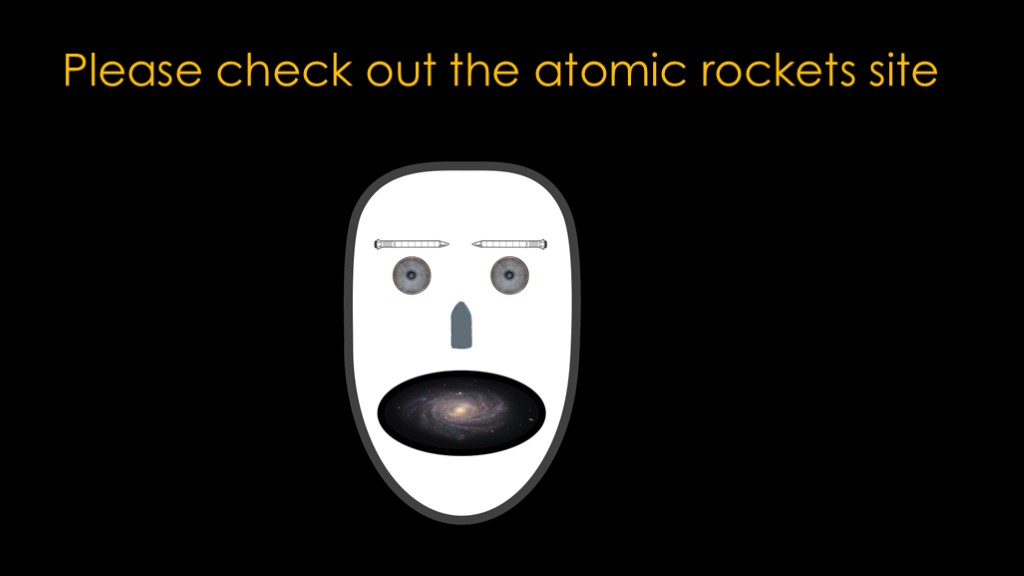
If you enjoyed this video, please check out the atomic rockets site.